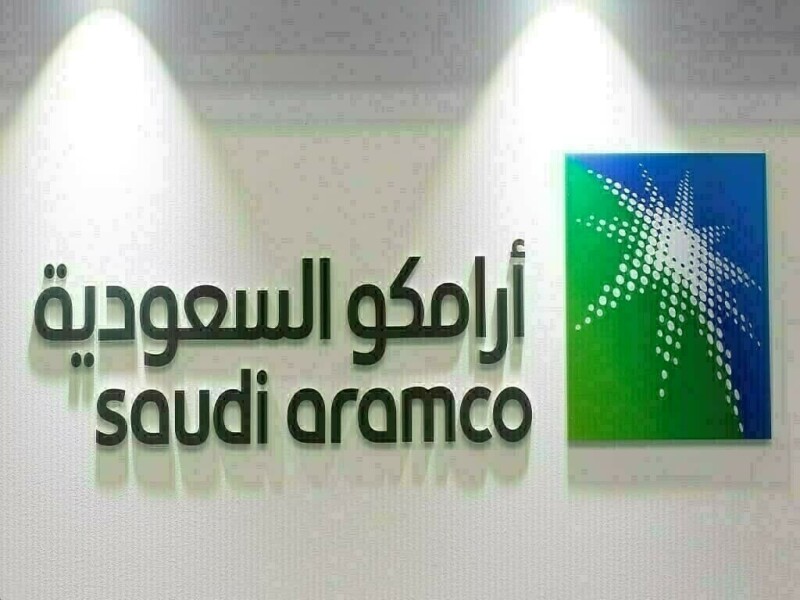DUBAI: Saudi oil giant Aramco, a longtime cash cow for the kingdom, reported a 4.6% drop in first-quarter profit on Sunday due to lower sales and higher operating costs as economic uncertainty hit crude markets.
The world’s top oil exporter reported net profit of 97.54 billion riyals ($26.01 billion) in the three months ended March 31, which beat a company-provided median estimate from 16 analysts of $25.36 billion.
The shares were up 0.64% to 25.00 riyals as of 0754 GMT, though down 10.9% so far this year.
Aramco confirmed total dividends of $21.36 billion for the first quarter, $219 million of which was performance-linked dividends, a mechanism introduced after a windfall from oil prices in 2022 following Russia’s invasion of Ukraine.
Saudi Arabia for decades has relied on Aramco’s generous payouts, which also include royalties and taxes, to fuel its growth.
Oil generated 62% of government revenue last year and the International Monetary Fund has estimated Saudi Arabia needs oil at $92.3 this year to balance its budget.
The results were released before U.S. President Donald Trump’s visit to the kingdom on Tuesday.
His trade war with China has spooked global markets and sent crude prices tumbling amid fears of a global economic slowdown.
“Global trade dynamics affected energy markets in the first quarter of 2025, with economic uncertainty impacting oil prices,” Chief Executive Amin Nasser said in a statement, adding Aramco’s results showed the value of its low-cost operations.
“Such periods also highlight the importance of disciplined capital planning and execution while we continue to take a long-term view. In volatile times Aramco’s resilience underpins both our financial performance and our sustainable and progressive base dividend.”
Sonatrach and Saudi Aramco cut May LPG prices by 1-11%
Trump’s imposition of tariffs escalated sharply in early April, meaning the impact of his biggest trade policies were not reflected in the first-quarter results.
Lower prices hurt
Global crude benchmark Brent has been on a largely downward trajectory since a 2025 high of $82.03 in January. It closed at $63.91 on Friday.
Aramco had said in March it expected to declare total dividends of $85.4 billion in 2025, down sharply from last year’s payout of over $124 billion, which was based on 2023 and 2024 earnings.
The performance-linked payout, which last year totalled $43.1 billion, was slashed roughly 98% as free cash flow dried up.
The kingdom in recent years has been pouring vast sums into projects to diversify the economy away from oil under a programme called Vision 2030.
Recently it has been building or renovating 15 stadiums for the 2034 World Cup, the most high-profile of several showpiece events Saudi Arabia will host in coming years.
Amid lower oil prices, some of the kingdom’s lofty ambitions, including a futuristic city in the desert, have been scaled back to prioritise completing projects essential to hosting global sporting events over the next decade as rising costs weigh, sources told Reuters in November.
The Saudi government directly owns roughly 81.5% of Aramco, while its sovereign wealth fund PIF controls an additional 16% stake.
“The sharp fall in the oil price makes the financing outlook for both the fiscal shortfall and Vision 2030 significantly more challenging,” said Monica Malik, chief economist at Abu Dhabi Commercial Bank, adding weaker Aramco profits already reflected in a wider budget deficit in the first quarter.
Aramco’s free cash flow was $19.2 billion in the first quarter, down 15.8% from a year ago. Performance-linked payouts are linked to free cash flow.
Capital expenditure was just over $12.5 billion in the first quarter, up 15.9% from a year before. Aramco had outlined capital investments, which includes capex and external investments, of between $52 billion and $58 billion in 2025. Capex was $50.4 billion last year.
Higher output coming
The de facto Saudi-led Organization of the Petroleum Exporting Countries (OPEC) and allies including Russia, known together as OPEC+, have been curtailing output since 2022 to support prices amid rising output from other producers. The kingdom, which has production capacity of around 12 million bpd, had shouldered the largest share of the cuts.
OPEC+ agreed to boost output by 411,000 barrels per day in May and the same volume in June. That will increase the kingdom’s production to nearly 9.37 million bpd from roughly 9 million bpd before May.
CEO Nasser had previously touted the kingdom’s spare output capacity, the largest in the world, saying it could be activated in a matter of weeks.
Trump had publicly called on Riyadh and OPEC to reduce oil prices, as he did during his first term. He has also said Riyadh should “round up” investments in the U.S. to $1 trillion after the kingdom said it wants to put $600 billion into expanded investment and trade with the U.S. over the next four years.


